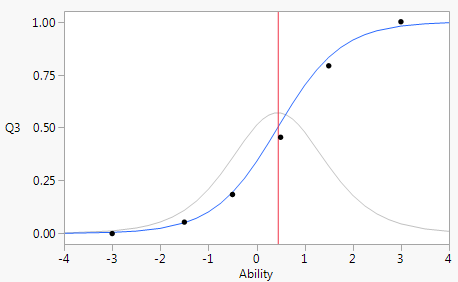Item Analysis
Analyze Test Results by Item and Subject
The Item Analysis platform enables you to fit item response theory models. The Item Response Theory (IRT) method is used for the analysis and scoring of measurement instruments such as tests and questionnaires. Item response theory uses a system of models to relate a trait or ability to an individual’s probability of endorsing or correctly responding to an item. Frequently, the trait or ability of interest is not directly measurable and is therefore called latent. IRT can be used to study standardized tests, cognitive development, and consumer preferences. IRT is an alternative method to classical test theory (CTT) where the focus is on the total observed score rather than the item scores.
The Item Analysis platform implements the IRT method with the following outcomes:
• Measurement instruments are scored at the item level, providing insight into the contributions of each item on the latent response.
• Scores for both the responders and the items are produced on the same scale.
• Respondent and item scores are shown on a single plot.
• Item characteristic curves are shown. These curves can be used to explore the relationship between items and respondent’s underlying trait or ability.
For more information about item response theory, see de Ayala (2009).
Figure 11.1 Item Analysis Characteristic Plot
